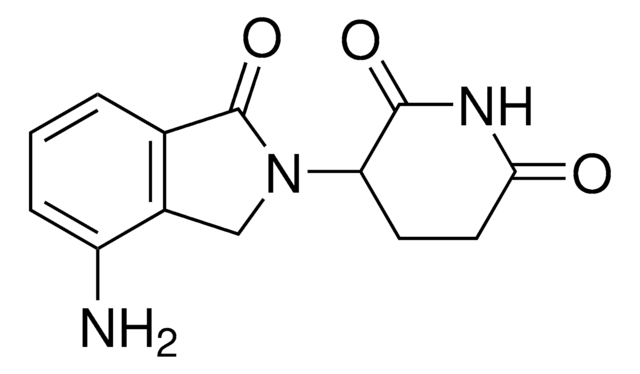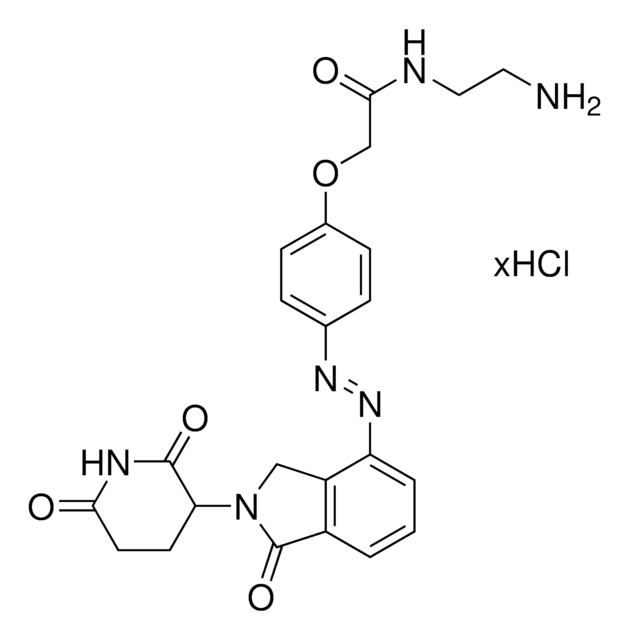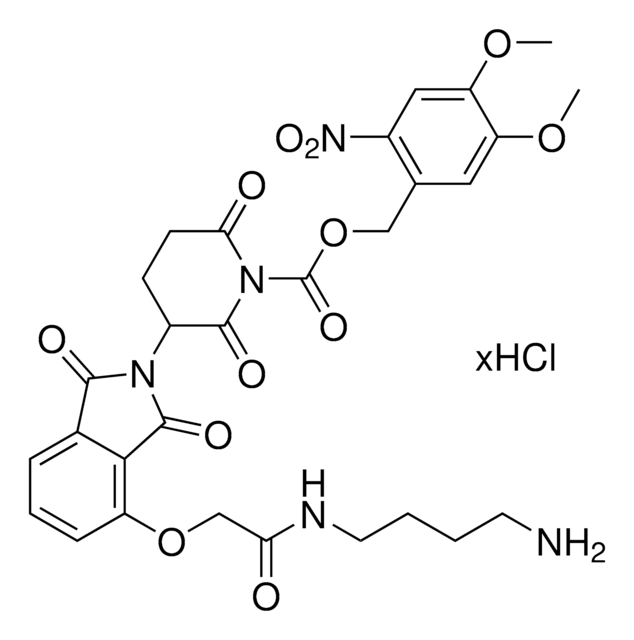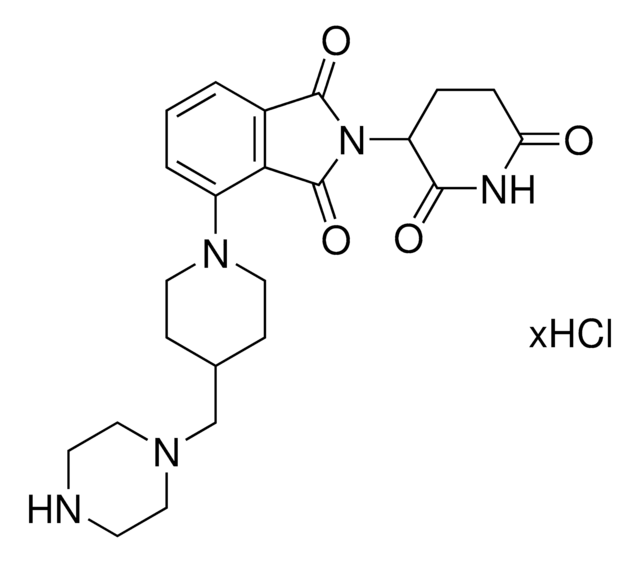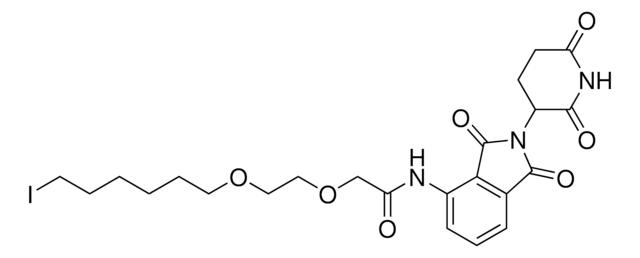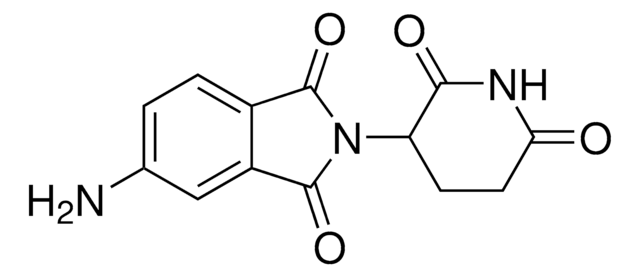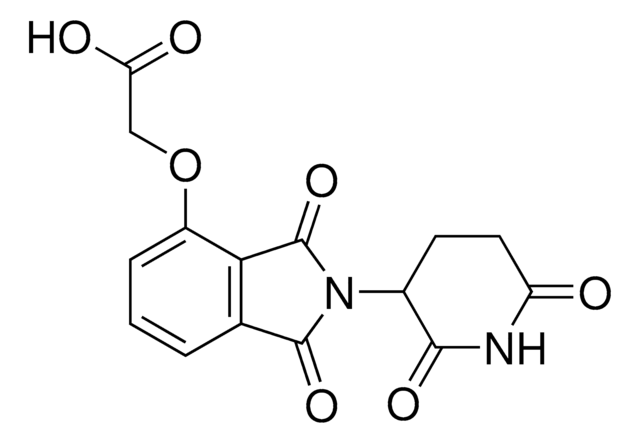919888
Thalidomide-Photoswitch3-NH2 hydrochloride
≥95%
Synonym(s):
(E)-N-(4-((4-Aminophenyl)diazenyl)phenyl)-2-((2-(2,6-dioxopiperidin-3-yl)-1,3-dioxoisoindolin-4-yl)oxy)acetamide hydrochloride, Photoswitchable protein degrader building block for PROTAC®
About This Item
Recommended Products
ligand
thalidomide
Quality Level
Assay
≥95%
form
solid
reaction suitability
reactivity: carboxyl reactive
reagent type: ligand-linker conjugate
functional group
amine
storage temp.
2-8°C
SMILES string
O=C1N(C2C(NC(CC2)=O)=O)C(C3=C1C=CC=C3OCC(NC4=CC=C(/N=N/C5=CC=C(N)C=C5)C=C4)=O)=O.Cl
InChI
1S/C27H22N6O6.ClH/c28-15-4-6-17(7-5-15)31-32-18-10-8-16(9-11-18)29-23(35)14-39-21-3-1-2-19-24(21)27(38)33(26(19)37)20-12-13-22(34)30-25(20)36;/h1-11,20H,12-14,28H2,(H,29,35)(H,30,34,36);1H/b32-31+;
InChI key
LEIFAZYMMHNBAT-MRRLHAJBSA-N
Related Categories
Application
Suggested wavelengths for photoswitching:
- Switch to cis isomer: 390 nm (380-400 nm)
- Switch to trans isomer (thermally more stable isomer): >450 nm
Browse our full offering of degrader building blocks that streamlines the synthesis of degrader libraries.
Learn more:
Technology Spotlight: Degrader Building Blocks for Targeted Protein Degradation
Portal: Building PROTAC Degraders for Targeted Protein Degradation
Product can be used with our line of photoreactors: Including Penn PhD (Z744035) & SynLED 2.0 (Z744080)
Other Notes
Legal Information
related product
Storage Class Code
11 - Combustible Solids
WGK
WGK 3
Flash Point(F)
Not applicable
Flash Point(C)
Not applicable
Regulatory Information
Choose from one of the most recent versions:
Certificates of Analysis (COA)
Don't see the Right Version?
If you require a particular version, you can look up a specific certificate by the Lot or Batch number.
Already Own This Product?
Find documentation for the products that you have recently purchased in the Document Library.
Articles
Protein Degrader Building Blocks are a collection of crosslinker-E3 ligand conjugates with a pendant functional group for covalent linkage to a target ligand.
Our team of scientists has experience in all areas of research including Life Science, Material Science, Chemical Synthesis, Chromatography, Analytical and many others.
Contact Technical Service